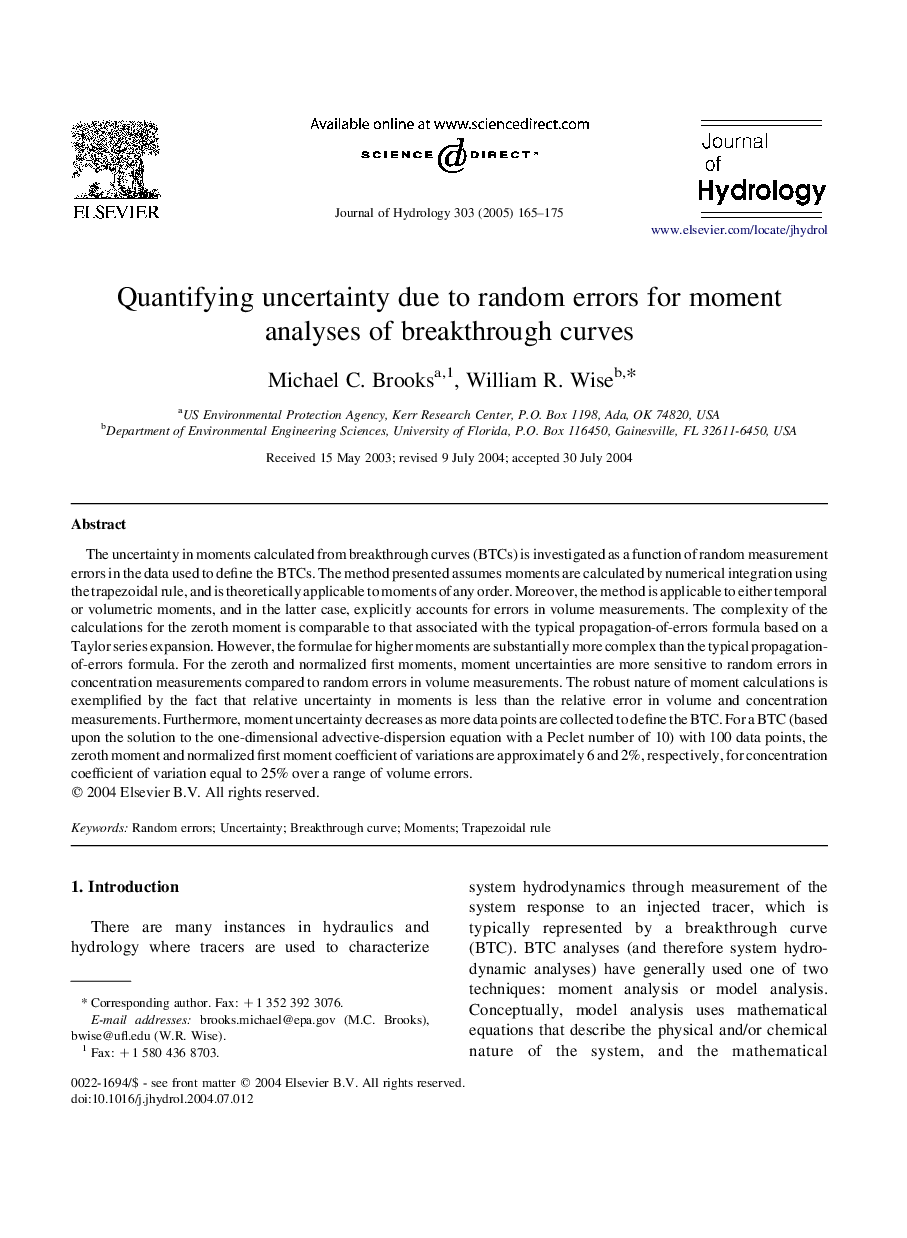| Article ID | Journal | Published Year | Pages | File Type |
|---|---|---|---|---|
| 9491387 | Journal of Hydrology | 2005 | 11 Pages |
Abstract
The uncertainty in moments calculated from breakthrough curves (BTCs) is investigated as a function of random measurement errors in the data used to define the BTCs. The method presented assumes moments are calculated by numerical integration using the trapezoidal rule, and is theoretically applicable to moments of any order. Moreover, the method is applicable to either temporal or volumetric moments, and in the latter case, explicitly accounts for errors in volume measurements. The complexity of the calculations for the zeroth moment is comparable to that associated with the typical propagation-of-errors formula based on a Taylor series expansion. However, the formulae for higher moments are substantially more complex than the typical propagation-of-errors formula. For the zeroth and normalized first moments, moment uncertainties are more sensitive to random errors in concentration measurements compared to random errors in volume measurements. The robust nature of moment calculations is exemplified by the fact that relative uncertainty in moments is less than the relative error in volume and concentration measurements. Furthermore, moment uncertainty decreases as more data points are collected to define the BTC. For a BTC (based upon the solution to the one-dimensional advective-dispersion equation with a Peclet number of 10) with 100 data points, the zeroth moment and normalized first moment coefficient of variations are approximately 6 and 2%, respectively, for concentration coefficient of variation equal to 25% over a range of volume errors.
Related Topics
Physical Sciences and Engineering
Earth and Planetary Sciences
Earth-Surface Processes
Authors
Michael C. Brooks, William R. Wise,
